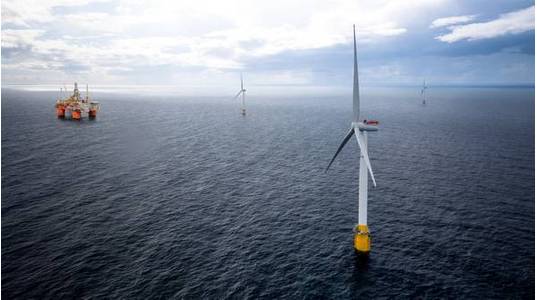
The UK oil and gas regulator Oil and Gas Authority (OGA) last week hosted the first of a series of workshops on offshore oil and gas platform electrification aimed at reducing greenhouse gas emissions, a step dubbed vital in helping the UK reach the net-zero target by 2050.
The workshop builds on the OGA’s recent publication of its UKCS Energy Integration report which found that the integration of offshore energy systems including oil and gas, renewables, hydrogen and carbon capture and storage could contribute to deliver around 30% of the UK’s total carbon reduction requirements needed to meet the 2050 net zero target.
At the workshop, OGA says, operators and representatives of the power generation, oil and gas, and wind farm sectors discussed the feasibility of projects such as platform electrification, power supply from windfarms and transmission infrastructure, sharing and identifying technical issues that need to be resolved for projects to go forward.
The workshop also looked specifically at oil and gas platform electrification and noted that it is both essential for cutting oil and gas sector production emissions in the near term and critical to preserving the industry’s social license to operate.
Wind powered oil and gas platforms
According to OGA, electrification could reduce UKCS oil and gas operational emissions by 2-3MtCO2 p.a. by 2030, which is the equivalent of reducing 20% of today’s production emissions, rising to 40% by 2030.
"To achieve this vision, the industry should deliver at least two operational electrification projects by the mid-2020s," OGA said.
One of the most significant opportunities in this space are, per OGA, wind power supply and transmission link with the mainland enabling electrification of new oil and gas projects West of Shetland.
Further, existing oil and gas facilities in the Outer Moray Firth could be electrified through connection to wind power developments in the area, and ScotWind Leasing opportunities
Central North Sea platforms, located at a greater distance from the UK shore, could potentially benefit from a cross-border power supply (eg. Norway) and floating wind.
OGA also said there were several cross-industry opportunities in the Southern North Sea, due to closer proximity between windfarms and oil and gas operations, and Windfarm licence Round 4 as future expansion.
The Energy Integration project work also identified potential synergies between the oil and gas and renewables industries which would be critical for the economic delivery of electrification opportunities, including: O&G access to lower-cost electricity directly from offshore windfarms, creating commercial opportunity for wind developers to expand; Sharing of investment in transmission infrastructure between O&G and renewables (and potentially also with interconnector projects); Reuse O&G infrastructure ( platforms for electricity transmission equipment, and onshore terminals as onshore bases); Gas-to-wire to potentially help balancing electricity supply and increase cables utilisation.
Equinor in Norway, for example, with its Hywind Tampen project, is the closest to bringing a project to power oil and gas platforms with offshore wind online.
Norway in April approved Equinor's 4.8 billion Norwegian crowns ($466 million) plan to build the Hywind Tampen project. The wind farm will consist of 11 wind turbines based on the Hywind wind farm concept developed by Equinor. The 8 MW floating turbines will have a total capacity of 88 MW and meet about 35 percent of the annual power demand of the five platforms Snorre A and B and Gullfaks A, B and C.
The wind farm will be located around 140 kilometers from shore, between the Snorre and Gullfaks platforms, at a water depth of 260 to 300 meters.
Operated from Equinor’s offices in Bergen, Hywind Tampen is scheduled for start-up at the end of 2022.
Electrification vital to cut emissions
Following the workshop, Scott Robertson, OGA Director of Operations, said: "Platform electrification is a vital part of the industry’s contribution towards the net-zero by 2050 target and an important deliverable to help the oil and gas sector maintain its social license to operate. It is already a tried and tested technology, readily deployed in the Norwegian sector."
“We are very pleased to see real engagement on this from Operators, and collaboration with the power sector and investors and are keen to see activity move at pace.
“The OGA is doing a number of things to support increased pace, including facilitating introductions to develop a critical mass of participants and collaboration across oil/ gas, wind and power sectors and identifying barriers where the OGA can play a role in finding enablers.”